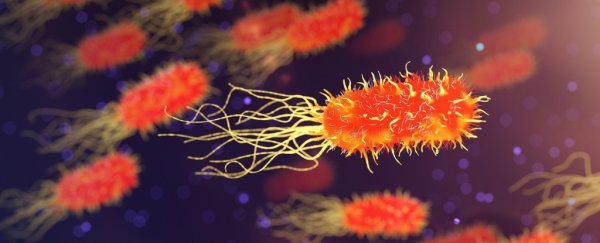You might not have given much thought to predatory bacteria before, but a new study reveals that the behavior of these microorganisms plays a crucial part in the balance of nutrients and carbon capture in soil.
These predatory bacteria – bacteria that eat other bacteria – grow at a faster rate and consume more resources than non-predatory bacteria, and have more of an influence on their surroundings than scientists have previously realized.
In fact, the team behind the study describes the actions of the predatory bacteria as being very much like a wolf pack: They use enzymes and even fang-like filaments to devour other types of bacteria, giving them an outsized influence on their environment.
"We've known predation plays a role in maintaining soil health, but we didn't appreciate how significant predator bacteria are to these ecosystems before now," says Bruce Hungate, a soil ecologist at Northern Arizona University.
The team analyzed a total of 82 sets of data containing hundreds of bacterial species, from 15 sites across a range of ecosystems (including one stream).
About 7 percent of the bacteria were found to be predatory. When extra carbon was added to the soil, the predatory bacteria were better able to use it to spur their growth.
A recently developed technique called quantitative Stable Isotope Probing (qSIP) was used for the analysis. It uses labeled isotopes to track the activity of bacteria, almost like you might track social media comments with a hashtag, and it enables scientists to see the habits and reach of predatory bacteria.
Two types of predatory bacteria were highlighted in the study: Bdellovibrionales and Vampirovibrionales, which are both obligate predator bacteria. They grew 36 percent faster and captured carbon 211 percent more quickly than non-predatory bacteria.
That's pretty important to know, considering how critical our soil is for storing carbon and keeping it out of our atmosphere.
An insight into how carbon and other nutrients move through soil is going to play a vital role in climate change modeling – soil ecosystems currently contain more carbon than is stored in all the plants on Earth.
As well as offering an insight into how microbial food chains work and are kept together, the study of predatory bacteria might eventually become valuable in the development of therapeutic drugs, the researchers say.
"Until now, predatory bacteria have not been a part of that soil story, but this study suggests that they are important characters who have a significant role determining the fate of carbon and other elements," says Hungate.
"These findings motivate us to take a deeper look at predation as a process."
The research has been published in mBio.
